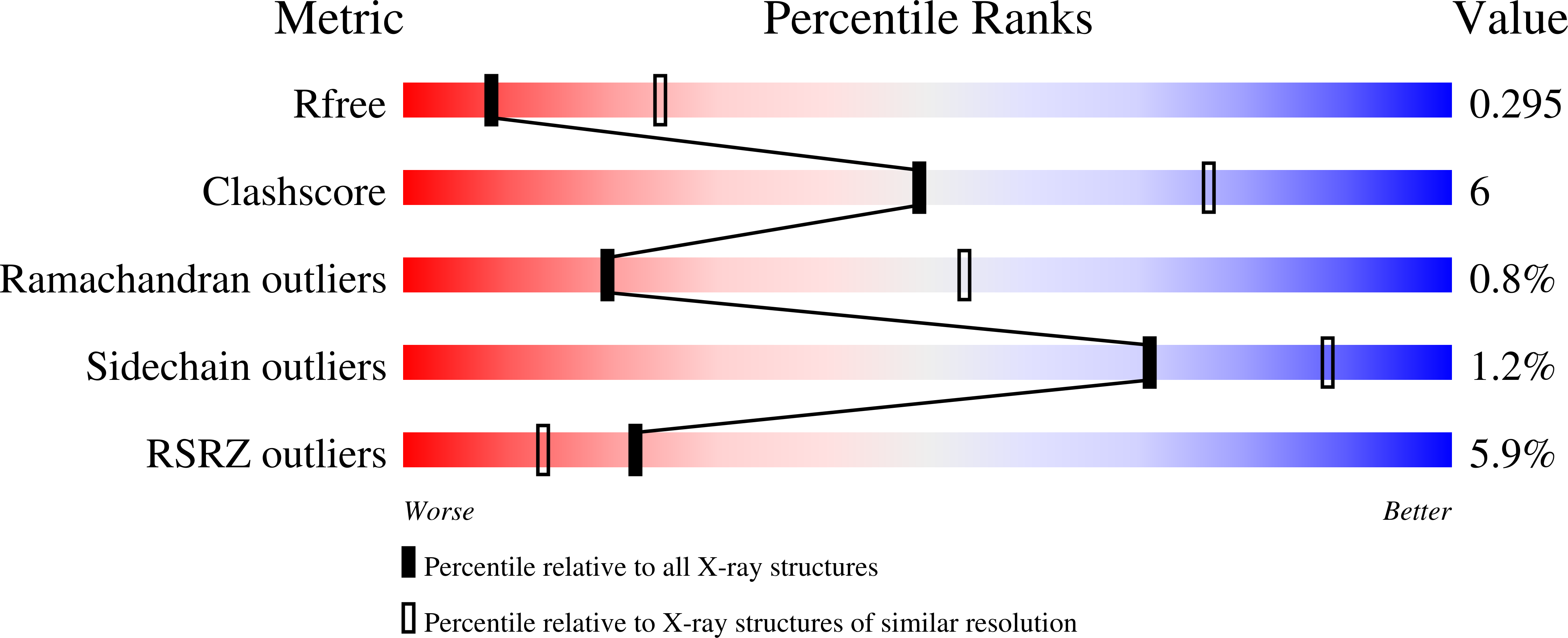Crystal structures and inhibition of Trypanosoma brucei hypoxanthine-guanine phosphoribosyltransferase.
Teran, D., Hockova, D., Cesnek, M., Zikova, A., Naesens, L., Keough, D.T., Guddat, L.W.(2016) Sci Rep 6: 35894-35894
- PubMed: 27786284
- DOI: https://doi.org/10.1038/srep35894
- Primary Citation of Related Structures:
5JSQ, 5JV5, 5K51, 5KAM, 5KAP - PubMed Abstract:
Human African Trypanosomiasis (HAT) is a life-threatening infectious disease caused by the protozoan parasite, Trypanosoma brucei (Tbr). Due to the debilitating side effects of the current therapeutics and the emergence of resistance to these drugs, new medications for this disease need to be developed. One potential new drug target is 6-oxopurine phosphoribosyltransferase (PRT), an enzyme central to the purine salvage pathway and whose activity is critical for the production of the nucleotides (GMP and IMP) required for DNA/RNA synthesis within this protozoan parasite. Here, the first crystal structures of this enzyme have been determined, these in complex with GMP and IMP and with three acyclic nucleoside phosphonate (ANP) inhibitors. The K i values for GMP and IMP are 30.5 μM and 77 μM, respectively. Two of the ANPs have K i values considerably lower than for the nucleotides, 2.3 μM (with guanine as base) and 15.8 μM (with hypoxanthine as base). The crystal structures show that when two of the ANPs bind, they induce an unusual conformation change to the loop where the reaction product, pyrophosphate, is expected to bind. This and other structural differences between the Tbr and human enzymes suggest selective inhibitors for the Tbr enzyme can be designed.
Organizational Affiliation:
The School of Chemistry and Molecular Biosciences, The University of Queensland, Brisbane, 4072 QLD, Australia.















